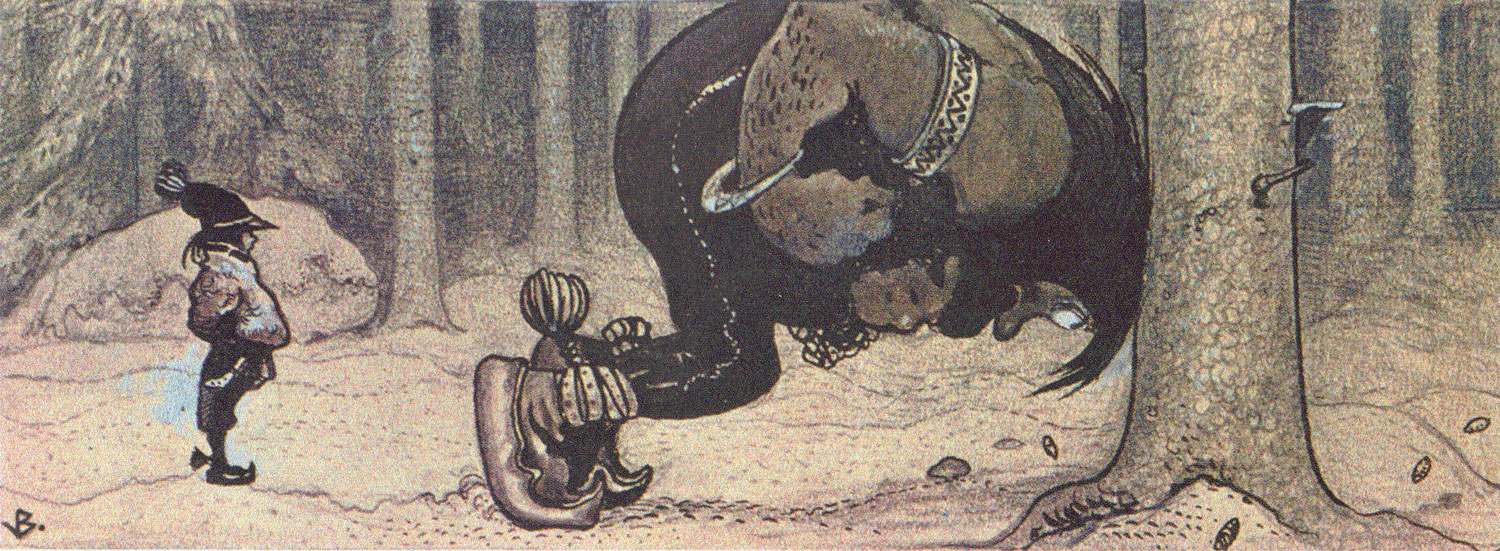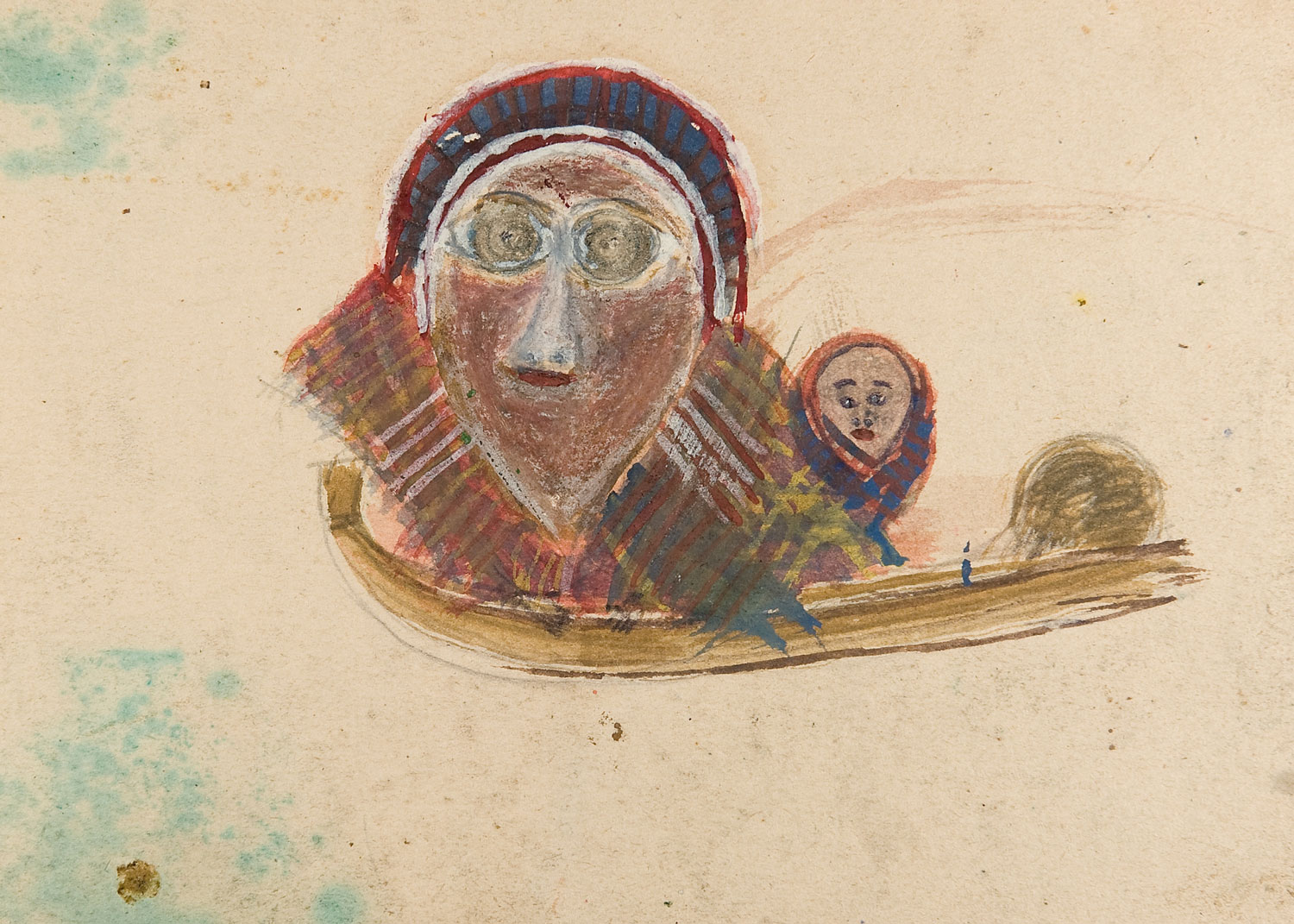- Startpage
- In English
- The Inventory
- The tradition of Stállu
The tradition of Stállu
Stállu is one of the main characters in Sami storytelling. In traditional stories, Stállu is described as an evil but easily deceived giant who hunts reindeer and the Sami people.
Location: Nation wide
The Sami storytelling tradition is passed down through generations, and is closely connected to life and nature in the Sápmi region. The stories take place in familiar settings or in another world, and involve people, animals, and supernatural beings.
The name Stállu may derive from the Old Norse word “stahla”, meaning steel or iron. In certain stories, Stállu wears iron clothing as armor as protection from arrows and spears. Different regions have their own stories and descriptions of Stállu. Some describe Stállu as the indigenous people of Sápmi. Most commonly, Stállu is a man-like giant or troll who hunts and eats men and reindeer and kidnaps women, but who is also easily fooled.
The Stállu stories are closely connected to nature and have given names to places in Sápmi, such as “Staloberget” meaning the Stalo (Stállu) Mountain. Another phenomenon is “stalotomter”, Stállu foundations, which are archeological remains at a high altitude in the fell landscape of Sápmi. These are probably the remains of Sami dwellings dating back to 800–1100 BC.
The Sami storytelling is a predominately oral tradition. As such, there are few historical written sources older than the early 20th century in which the Stállu tradition can be traced. During the early 20th century, the Sami people faced great changes and challenges when encountering other groups of people in Sweden. The Stállu stories may function as a symbolical way of emphasizing the need to protect one’s people during a time of crisis.
The Stállu stories are still told in Sápmi today, particularly to children. The stories are also a common subject in Sami children’s culture. Several museums such as Ájtte in Jokkmokk feature Stállu in their exhibitions. During the annual winter market in Jokkmokk, there are storytelling gatherings at which the Stállu tradition continues.


